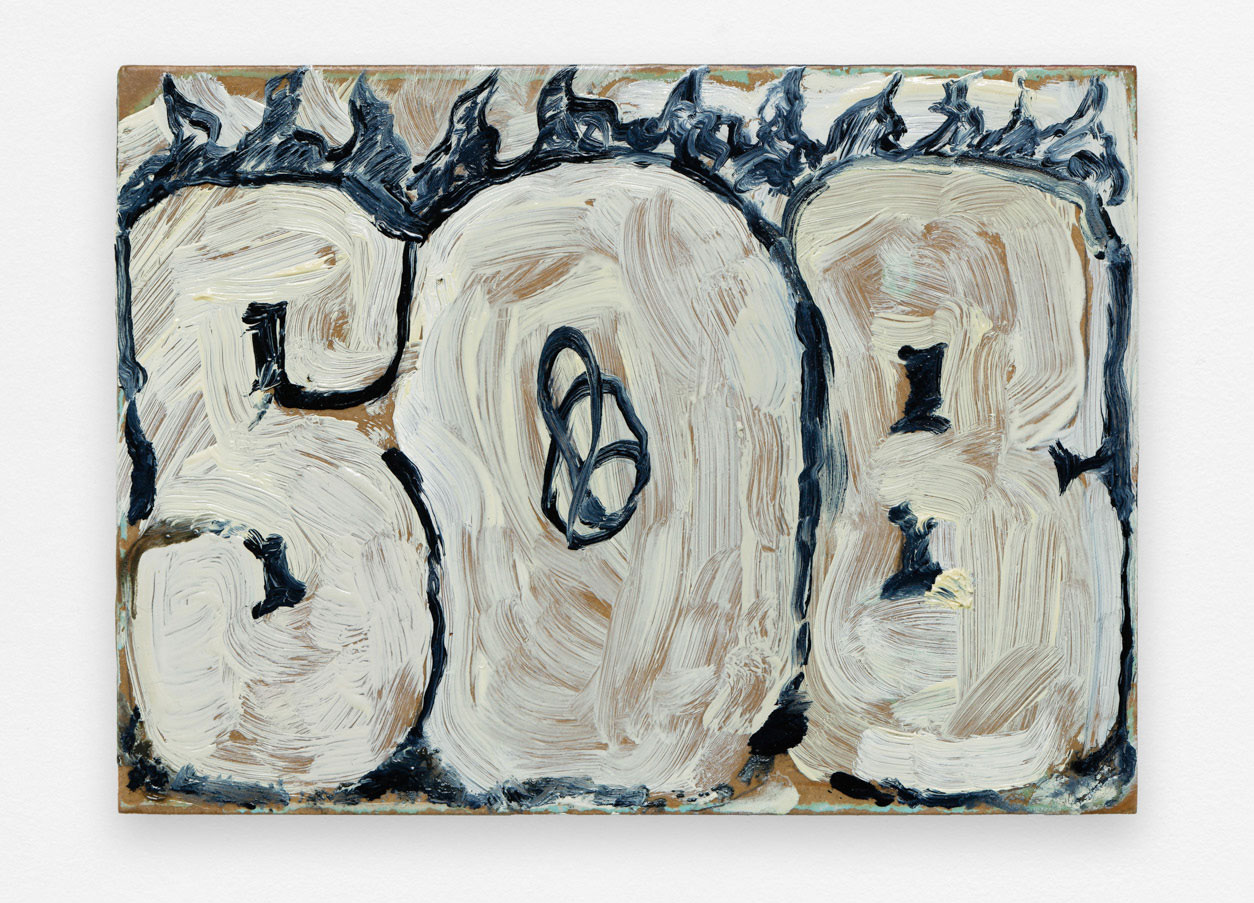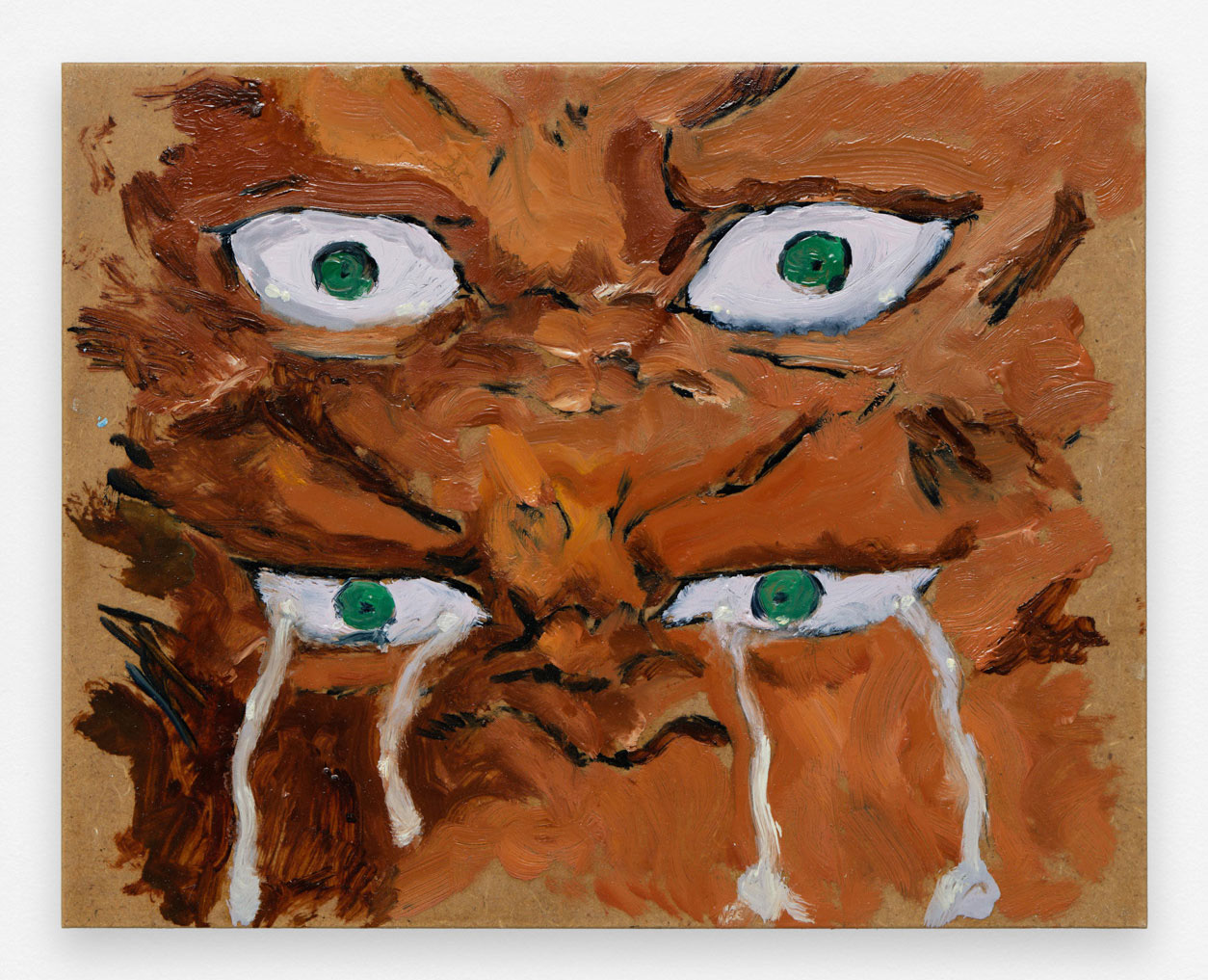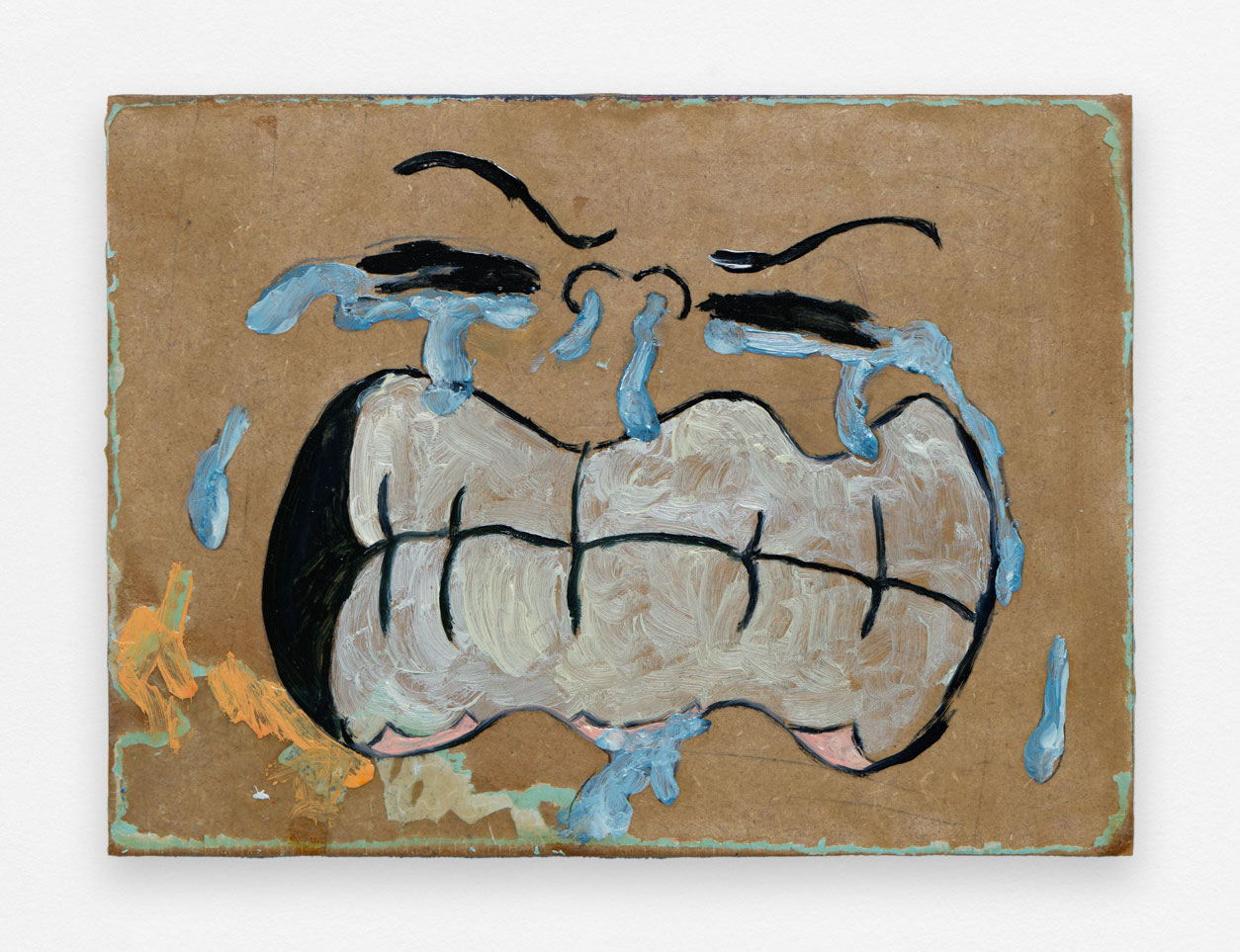PRESENTATION: Antoine Donzeaud-Rien Sans Peine
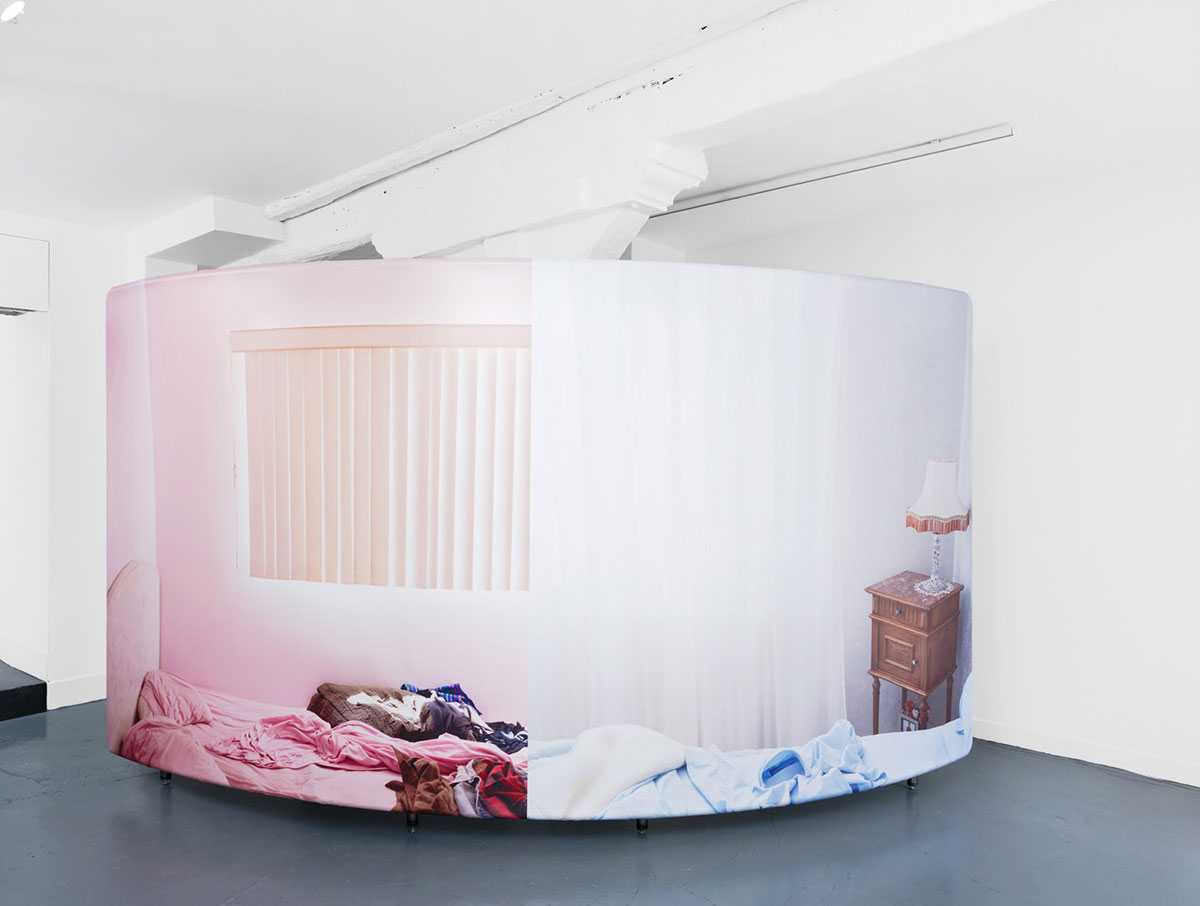 Antoine Donzeaud’s work operates through propagation. It is linked to architecture in the verticality of formats, the reference to the frame, the structure of construction, as well as in the horizontal movement, stroll, and wandering. In its form, minimalism intersects with the urban imprint of advertising and graffiti. This relationship with architecture is vast, drawing inspiration from John Divola’s photographic series of abandoned houses and Gordon Matta-Clark’s monumental cuttings.
Antoine Donzeaud’s work operates through propagation. It is linked to architecture in the verticality of formats, the reference to the frame, the structure of construction, as well as in the horizontal movement, stroll, and wandering. In its form, minimalism intersects with the urban imprint of advertising and graffiti. This relationship with architecture is vast, drawing inspiration from John Divola’s photographic series of abandoned houses and Gordon Matta-Clark’s monumental cuttings.
By Dimitris Lempesis
Photo: Spiaggia Libera Gallery Archive
Blending images of strangers with his own, blurring the boundaries between the intimate and the public, constantly negotiating the threshold between domestic space and workspace, Antoine Donzeaud forges an artistic practice that draws from the most mundane and profound aspects of our existence. Conceived as a progression both spatial and emotional from the most common to the most personal, the exhibition “Rien Sans Peine” plays on the polysemy of the word “peine” in French: the laborious effort of work, which costs us and exhausts us; the sorrow that torments us and shapes us. Bringing together new sculptural installations, photographs, videos, and paintings, the exhibition connects various themes dear to Antoine Donzeaud: our absorption in work, our overconsumption of images, the overexposure of our intimacy on social networks, and how these contemporary experiences of instability (emblematic of late capitalism) transform our emotions. The exhibition opens with “Sans titre (deux chambres)”, two images, each showing the edge of an unmade bed. Illuminated by the peaceful light of a summer morning, the first image depicts a bedroom in the artist’s family home, where the blue sheets brush against the diaphanous white curtain. The second image shows the interior of a student bedroom, where yesterday’s clothes are scattered haphazardly. The scene is bathed in a pink glow, almost unreal, filtering through the slats of a Venetian blind. Side by side, these two images resemble each other, merge, and almost blend together. The interior spaces, in which we can close in on ourselves, are marked here by absence and emptiness. Impregnated with nostalgia for unknown but familiar places, these images are inexplicably touching, even sad. From the outset, the intimate is exposed here; the interior space—of love, secrets, dreams, sleep—is revealed. Printed on banners stretched over a metal structure borrowed from the billboards that punctuate our cities, these photographs shift personal space into the public sphere. This displacement tends to blur the two spheres, recalling El Wardany’s quote about sleep. Bent, the structure on which these photos are displayed acts as a threshold: it divides the exhibition space and conditions both the gaze and the approach of the visitor. The interior thus caresses the exterior in a suspended moment, a liminal time and space. Having begun studying architecture before turning to Fine Arts, Antoine Donzeaud admits to an obsession with structure and threshold, two architectural elements that delimit space but can also open it up. Facing these interior views are two large photographs hung on reclaimed banners, marked by time and wear. From the series “La Vie Normale”, these images capture various moments of life: a raised hand holds the end of a cigarette; an abandoned anorak seems to float, bodiless. These delicate gestures are accentuated by the paint traces that Antoine Donzeaud gradually adds, opening his photography to another materiality. Evoking both a personal narrative and an urban aesthetic, these images remain ambiguous, as it is impossible for us to distinguish their origin: the artist’s iPhone, or the stories of anonymous individuals? Blurring the boundaries between the familiar and the collective, these images testify to our overconsumption and overproduction of images. “We no longer know how to exist without imagining ourselves as images.” Describing the grip of images on our way of conceiving ourselves as subjects in the world, these words of Amelia Jones resonate with Antoine Donzeaud’s works. In the next space, the artist then forces us to lift our gaze from our screens: the work, “Suspended stories (la distance entre nous)” is at eye level. Suspended 1.95 meters above the ground, a false ceiling is covered with transparent banners, on which various familiar figures are painted with a spontaneous touch. Some cry, others scream. In a reversal of perspective, these characters seem to observe the spectators, like stalkers spying on Instagram stories. This strategy is reminiscent of one of Antoine Donzeaud’s first artistic gestures, which initially turned his paintings around, thus exposing the frame rather than the canvas. These displacements, reversals, and successive détournements reveal the structures underlying our physical and virtual spaces, and the mechanisms of perception at play. Extending the curve of the first installation, a white PVC curtain unfolds at the edge of the gallery. Reminiscent of the slats of the Venetian blind, this partition takes up the decorative vocabulary of West Coast office spaces. Exported subsequently to the rest of the world, this aesthetic bears witness to both the standardization of architecture and our approach to work. This coldness is disturbed by tangled lines that the artist has traced frantically in blue paint. At the back of this space and in front of the curtain, a new video mixes Instagram stories from strangers with other recordings made by the artist. Evoking the figures drawn on the false ceiling, people film themselves and expose their most personal experiences on social networks, eminently public spaces. Among the multiple images brimming with emotions, the face of a young silent woman for several minutes stops us. Thus, the exhibition’s journey leads us to the interiority of others, thereby revealing the community of intimate feelings that populate the virtual world, and the porosity between the intimate and the public in this space. The same profusion of emotions animates the six small paintings on wood, hung in the last room of the exhibition, delineated by a second Venetian blind. Some, marked by short interjections such as the familiar “ouech” or the brief “sob,” put words to the images previously seen. Finally, close-up views of animals and faces overwhelmed by emotion—from despair to grief to death—signal a return to the origins for Antoine Donzeaud. After concealing representation, it is now exposed.
Photo: Antoine Donzeaud, Sans titre (deux chambres), 2024, tarp, metal, 213 × 414 cm. Photo © Aurélien Mole, © Antoine Donzeaud, Courtesy the artist and Spiaggia Libera Gallery
Info: Spiaggia Libera Gallery, 56 Rue du Vertbois, Paris, France, Duration: 16/5-22/6/2024, Days & Hours: Wed-Sat 11:00-19:00, https://spiaggia-libera.com/
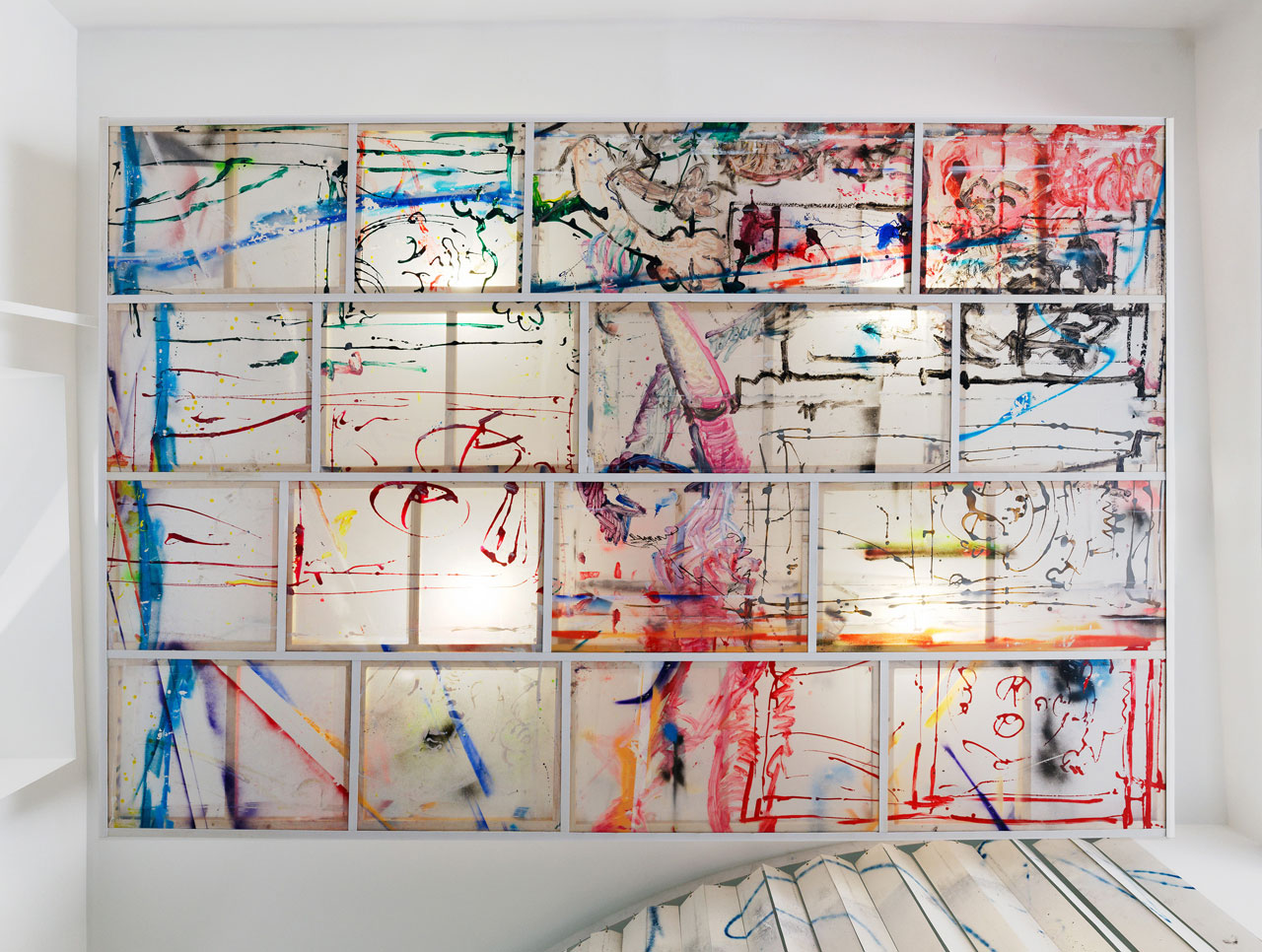
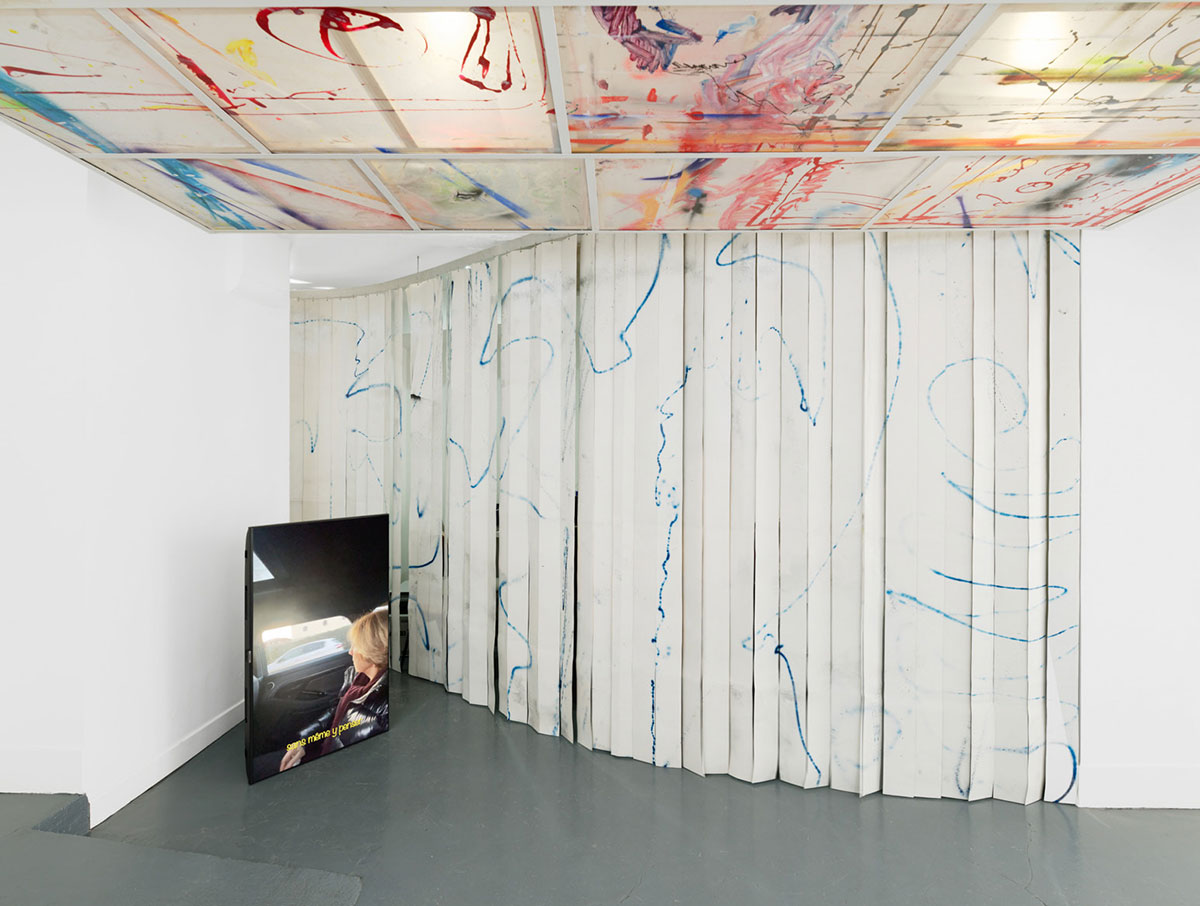
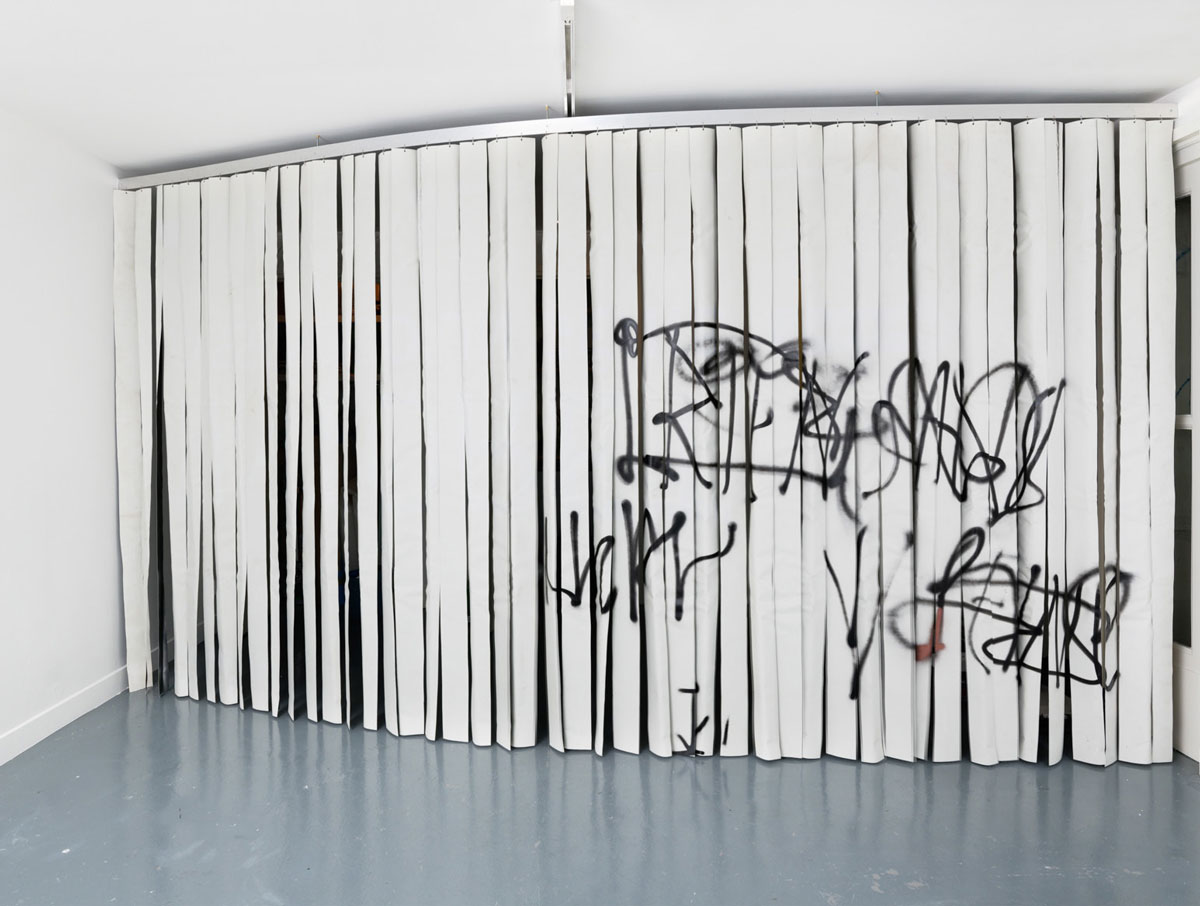
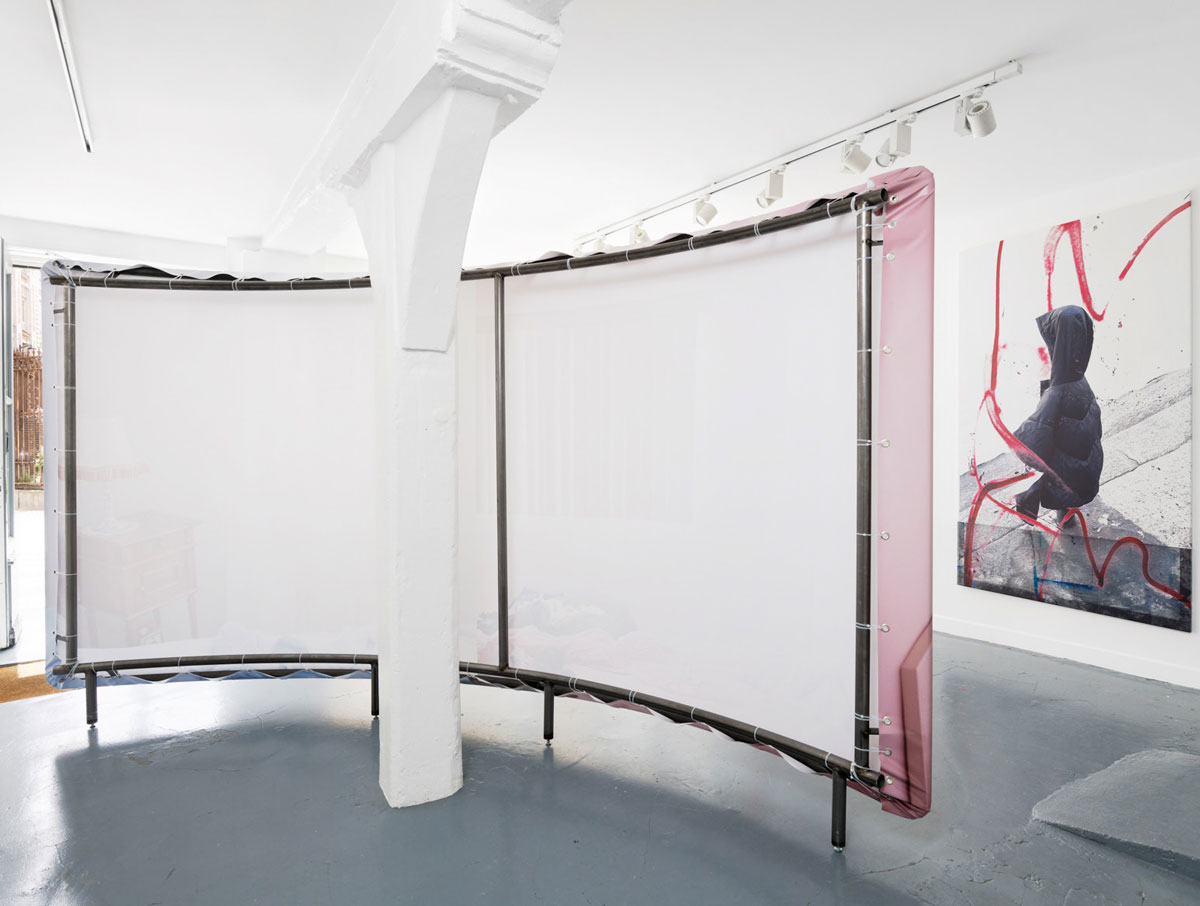
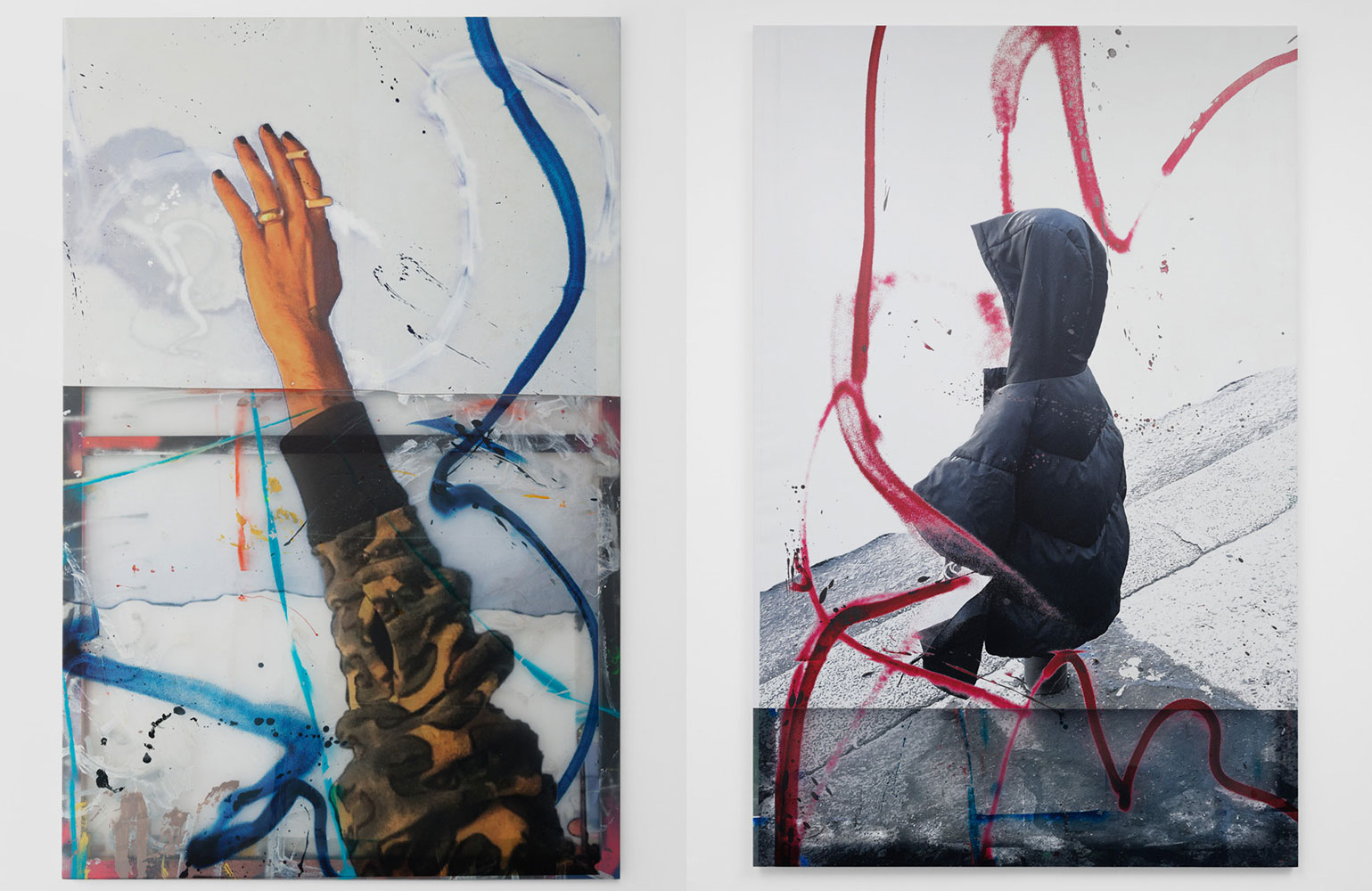
Right: Antoine Donzeaud, La vie normale (anorak), 2024, UV print on PVC and polythene tarp, spray paint, flashe, wood, rivets, 136 x 210 cm. Photo © Aurélien Mole, © Antoine Donzeaud, Courtesy the artist and Spiaggia Libera Gallery
